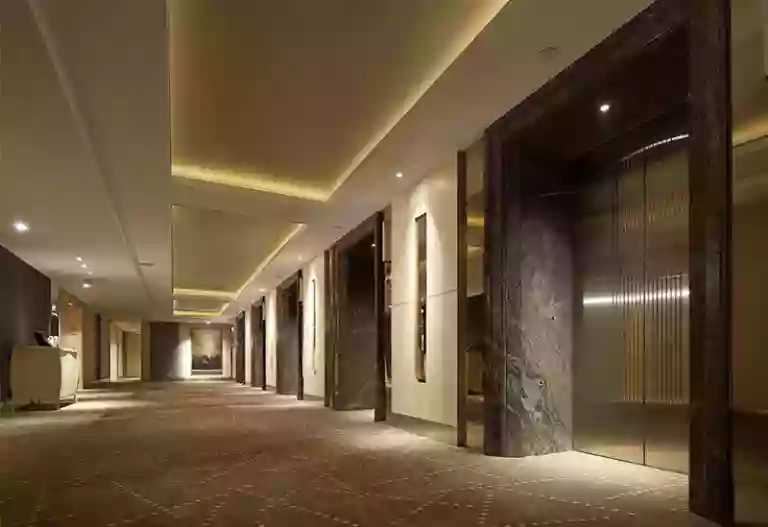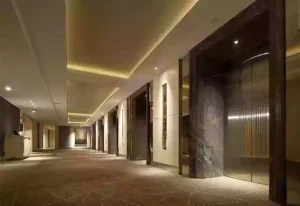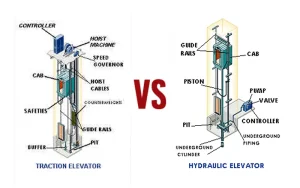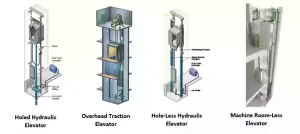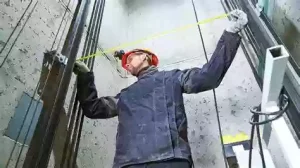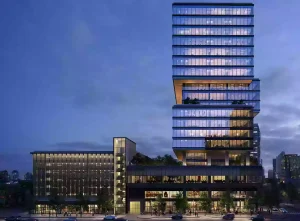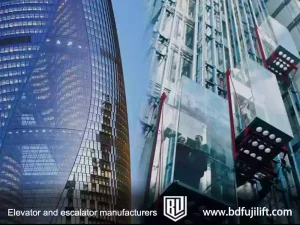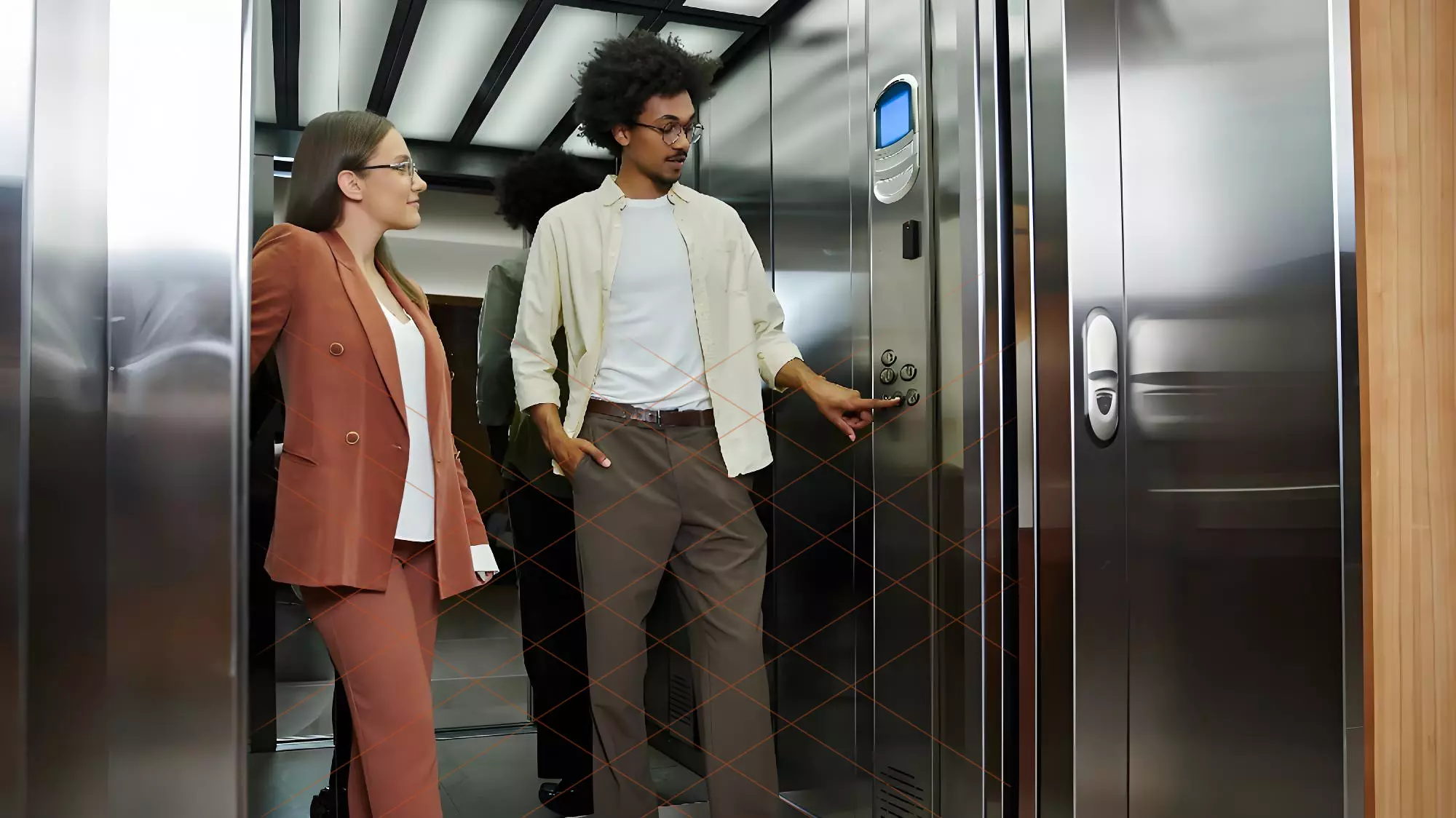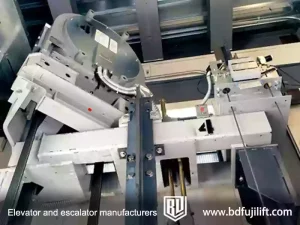Regarding the “cost of commercial elevators,” elevator experts emphasize that the price is not fixed. It is determined by several factors, such as the building type, usage requirements, elevator load, and speed. In real-world cases, successful elevator configurations often manage to effectively balance performance and cost. That’s why we’ve written this blog to help you understand the approximate price range of commercial elevators, as well as methods for saving costs, enabling you to make a better choice.
How Much Does a Commercial Elevator Cost on Average?
The cost of commercial elevators is influenced not only by the elevator type but also by factors such as the building type, the number of floors, and the complexity of installation. Generally, the standard installation cost of a commercial elevator ranges from $20,000 to $150,000, with significant price differences between various types of elevators available on the market.
Hydraulic Elevators:
Hydraulic elevators are typically suitable for low-rise buildings, with installation costs ranging from $20,000 to $50,000. These elevators have the advantage of a simple design and low maintenance costs, making them ideal for commercial spaces with lower building heights and less frequent use. According to market research, hydraulic elevators have a high market share in low-rise buildings, especially in residential and small commercial buildings.
Traction Elevators:
Traction elevators are suitable for taller buildings, and their costs are relatively higher, typically ranging from $32,000 to $64,000. The main advantages of traction elevators are higher energy efficiency and greater load capacity, making them well-suited for commercial buildings or high-rise structures that require frequent use. According to ISO 25745 (Elevator Energy Performance Standards), traction elevators are generally more energy-efficient than hydraulic elevators, making them the preferred choice for demanding environments.
Industrial Elevators:
These elevators are typically used in heavy-duty environments, with a price range between $40,000 and $100,000. Industrial elevators are durable and can carry large amounts of goods or equipment, making them ideal for factories, warehouses, and similar settings. However, due to their larger size, they are generally not suitable for buildings with limited space.
Small Elevators:
These elevators are designed for low-rise buildings, especially those with limited space. The price for small elevators typically ranges from $15,000 to $30,000. While they have smaller load capacities and slower speeds, their compact design makes them highly popular in small commercial buildings, particularly in older buildings or projects requiring upgrades.
Glass elevators are popular for their stylish appearance, especially in commercial spaces. The price typically ranges from $50,000 to $120,000. Due to their need for custom designs, glass elevators tend to be more expensive and require more complex installation. According to market research reports, glass elevators are increasingly common in high-end commercial office buildings and retail spaces.
Machine Room-Less Elevators (MRL):
Machine room-less elevators are ideal for buildings that do not have traditional elevator shafts, thanks to their space-saving design. The cost generally ranges from $25,000 to $80,000. Their flexible installation makes them a popular choice for new construction or renovation projects, especially in space-constrained environments. According to ASME A17.1 standards, the design of these elevators can be customized to meet the specific needs of the building.
What Factors Affect Elevator Installation Costs?
According to a market research report from MarketsandMarkets, the global elevator industry’s installation costs have been steadily rising in recent years, especially for high-end and custom elevators. Technological innovations and regulatory compliance are impacting the price. Let’s take a closer look at the key factors affecting the installation costs of commercial elevators.
Elevator Type
The type of commercial elevator directly influences the installation cost. According to data from Statista, traction elevators account for about 60% of the global elevator market share in high-rise buildings, and their price is typically 50%-100% higher than hydraulic elevators. Hydraulic elevators, on the other hand, are relatively inexpensive and are usually suited for low-rise buildings. Industrial and glass elevators are more expensive due to their complex design, load capacity, and functional requirements.
Building Characteristics
As reported by IBISWorld, the installation cost of elevators in high-rise buildings is about 20%-40% higher than in low-rise buildings. High-rise or complex building structures often require additional structural modifications or electrical system upgrades. For example, higher floors may require extra power supply or stronger load-bearing structures to support the elevator system. These additional engineering requirements increase the overall installation cost.
Customization Requirements
Custom requests (such as material selection, size customization, etc.) can significantly increase the installation cost of an elevator. For instance, according to the ASME A17.1 (American Elevator and Escalator Safety Code), glass elevator designs must meet additional safety standards, raising both material and installation complexity. As a result, the installation cost of such elevators is typically 30%-50% higher than that of standard elevators.
Regulatory Compliance
Building regulations vary across regions and countries, with different requirements for elevator design and installation, particularly concerning safety and accessibility features. Strict safety standards and building codes, such as accessibility design (ADA requirements), may increase installation costs. For example, ISO 25745 (Elevator Energy Efficiency Standards) mandates that elevators meet various safety and energy efficiency standards, further increasing the complexity and cost of installation.
How Long Does It Take to Install a Commercial Elevator?
The installation of a commercial elevator typically takes between 4 to 6 weeks, but the actual timeline can vary depending on the building structure and elevator type. The time frame for elevator installation mainly depends on the following factors:
Building Structure Complexity: If the building structure is complex or requires additional modifications (such as foundation reinforcement or electrical system upgrades), the installation time may be extended. In some high-rise or specialized buildings, more time may be required to adapt the elevator’s structure and system.
Elevator Type: Different types of elevators (such as hydraulic elevators, traction elevators, or machine-room-less elevators) may require different installation procedures. For example, traction elevators, with their more complex structure and operational system, may require a longer installation time.
Therefore, it is advisable to allow extra time during the elevator installation process to accommodate potential delays or additional work. Planning ahead and communicating with the professional team can help ensure that the project is completed on time.
Which Type of Commercial Elevator is the Most Expensive?
The cost of different types of commercial elevators varies greatly. Understanding the pros and cons of each type can help you choose the right one.
Elevator TypePrice RangeAdvantagesDisadvantages:
| Elevator Type | Price Range | Advantages | Disadvantages |
|---|---|---|---|
| Hydraulic Elevator | $20,000 – $50,000 | Low maintenance, simple design | Limited height, less energy-efficient |
| Traction Elevator | $32,000 – $64,000 | High energy efficiency, large load capacity | Higher initial cost |
| Industrial Elevator | $40,000 – $100,000 | Suitable for heavy loads, durable | Takes up more space |
| Small Elevator | $15,000 – $30,000 | Space-saving, suitable for low-rise buildings | Smaller load capacity and speed |
| Glass Elevator | $50,000 – $120,000 | Modern appearance, suitable for commercial spaces | High customization cost |
| Machine Room-Less Elevator | $25,000 – $80,000 | Space-saving, flexible installation | Limited functionality, complex maintenance |
Based on the elevator types, traction elevators and industrial elevators are usually more expensive, while hydraulic elevators and small elevators are more affordable.
Hidden Costs in Commercial Elevator Installation
In addition to the cost of the elevator itself, there may be hidden costs during installation. Knowing about these costs can help you prepare your budget and avoid overspending.
Structural Modifications: If the existing building requires structural modifications (such as reinforcing the elevator shaft or upgrading the electrical system), these costs can be quite high. The cost of structural modifications typically ranges from $10,000 to $30,000.
Electrical System Upgrades: Commercial elevators typically require a higher power supply, especially traction elevators and industrial elevators. Therefore, an upgrade to the existing electrical system may be needed, which costs between $2,000 and $5,000.
Permits and Insurance: Installing an elevator requires applying for relevant permits and purchasing insurance, and the fees for these can vary depending on the location.
Shipping and Transport Fees: The shipping cost for the elevator depends on the weight and transport distance, which may incur additional costs.
Are There Significant Cost Differences Between Different Types of Buildings?
The cost of elevators is also influenced by the type of building. The cost of installing an elevator may vary depending on the building type.
- A/B/E/I Class Buildings: These buildings generally require higher specification elevators, so the installation cost is higher. The average cost for one elevator is $136,447.
- H/L/M/F/S Class Buildings: The installation cost for elevators in these buildings is relatively lower, with an average cost of $96,741 for one elevator.
- Residential Buildings: The cost of elevators in residential buildings is relatively low, with an average cost of $104,629 for one unit.
Are There Ongoing Costs After Installation?
In addition to the installation cost, ongoing maintenance and energy costs must also be considered.
- Maintenance Costs: The annual maintenance cost for a commercial elevator typically ranges from $2,000 to $5,000, depending on the type of elevator and usage frequency.
- Energy Costs: The energy consumption of elevators varies depending on the type and frequency of use. Hydraulic elevators generally have lower energy consumption, while traction elevators are typically more energy-efficient.
By planning ahead and choosing wisely, you can reduce long-term maintenance and energy costs.
FAQ about Commercial Elevators
1. How much does a commercial outdoor elevator cost?
The cost of a commercial outdoor elevator is about $20,000 to $80,000. The price depends on the type of elevator, like hydraulic or traction, and the design needed for outdoor use. Outdoor elevators need strong materials to resist weather, so they can cost more than indoor elevators.
2. How much does it cost to install a commercial elevator in a two-, three-, four-, and five-story building?
The cost of installing a commercial elevator depends on how many floors the building has. Here is the price range:
- Two-story building: $25,000 to $50,000
- Three-story building: $35,000 to $65,000
- Four-story building: $45,000 to $80,000
Five-story building: $55,000 to $100,000 The price may change based on the elevator type and building needs.
3. What are the standard elevator dimensions for commercial buildings?
The standard size for a commercial elevator is:
- Cabin size: 5 feet by 7 feet (1500mm by 2100mm). This size is common, but it can change based on what the building needs.
- Door width: 36 inches (900mm) is standard for easy access.
- Weight capacity: Most commercial elevators can carry from 2,000 lbs to 5,000 lbs, but some models can hold more weight.
4. What are the elevator requirements for commercial buildings?
Commercial buildings need to follow some rules for elevators:
- Building Codes: The elevator needs to meet safety rules for electricity, machines, and fire protection.
- Accessibility: The elevator must follow ADA (Americans with Disabilities Act) rules to make it easy for everyone to use.
- Load Capacity: The elevator needs to be strong enough for the people or goods it will carry.
- Safety Standards: The elevator needs safety features like brakes, alarms, and emergency communication systems.
5. How much weight can a commercial elevator handle?
Commercial elevators usually carry between:
- Standard models: 2,000 lbs to 3,000 lbs
- Heavy-duty models: Up to 5,000 lbs or more. These are for buildings with more people or heavy goods.
- It is important to choose an elevator that can carry the right amount of weight based on the building needs.
6. Can I install a commercial elevator in my home?
Yes, you can install a commercial elevator in your home. But usually, home elevators are smaller and quieter than commercial ones. These elevators are also easier to fit in a home. They are made for fewer floors and have less weight capacity than commercial elevators.
7. What are some affordable alternatives to commercial elevators?
If you want a cheaper option than a commercial elevator, you can think about these:
- Vertical Platform Lifts (VPL): This is a cheaper choice for buildings with fewer floors, especially for people with disabilities.
- Stair Lifts: A stair lift is a good option for small buildings with only a few floors. It costs less, but it can carry fewer people or goods.
- Pneumatic Elevators: These use air to move the elevator. They are smaller and cost less to install than normal commercial elevators.
Through this article, you should now have a clearer understanding of the cost structure and influencing factors of commercial elevators. When selecting an elevator, it is important not only to consider the price but also to factor in long-term maintenance costs and energy consumption to make the most economical and practical choice.
About BDFUJI
As a leading brand in the elevator industry, BDFUJI has 14 years of experience in elevator design and manufacturing. We are committed to providing efficient and reliable commercial elevator solutions to customers worldwide, ensuring the smooth completion of every project. If you have any elevator installation needs or questions, feel free to contact our professional team.


